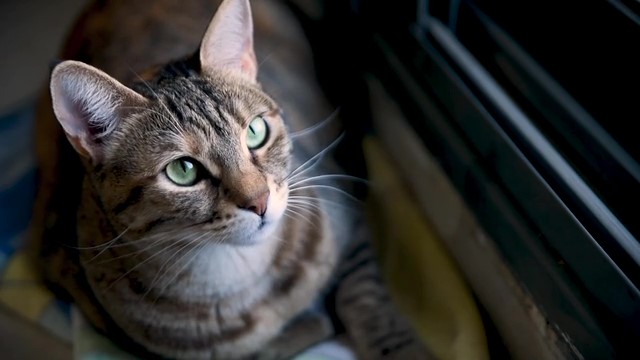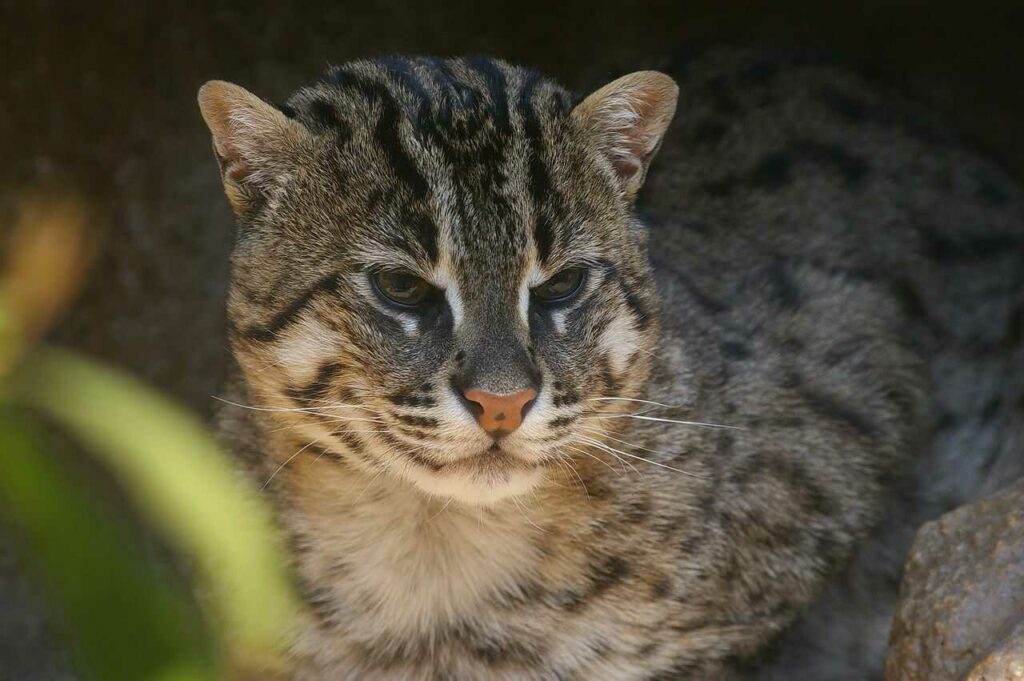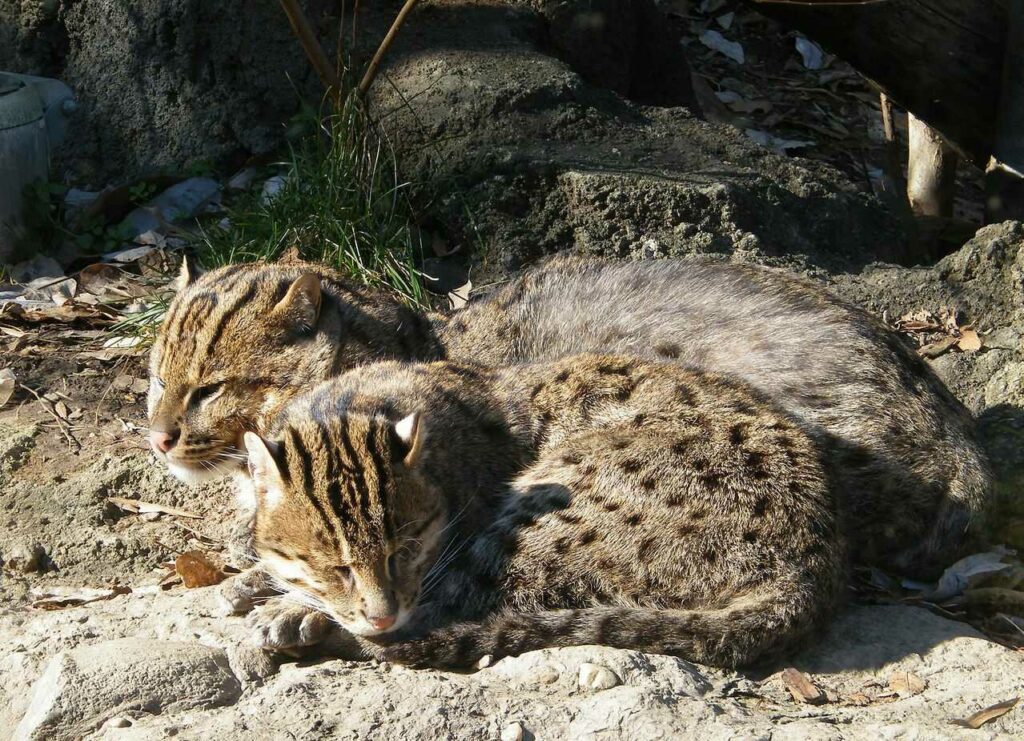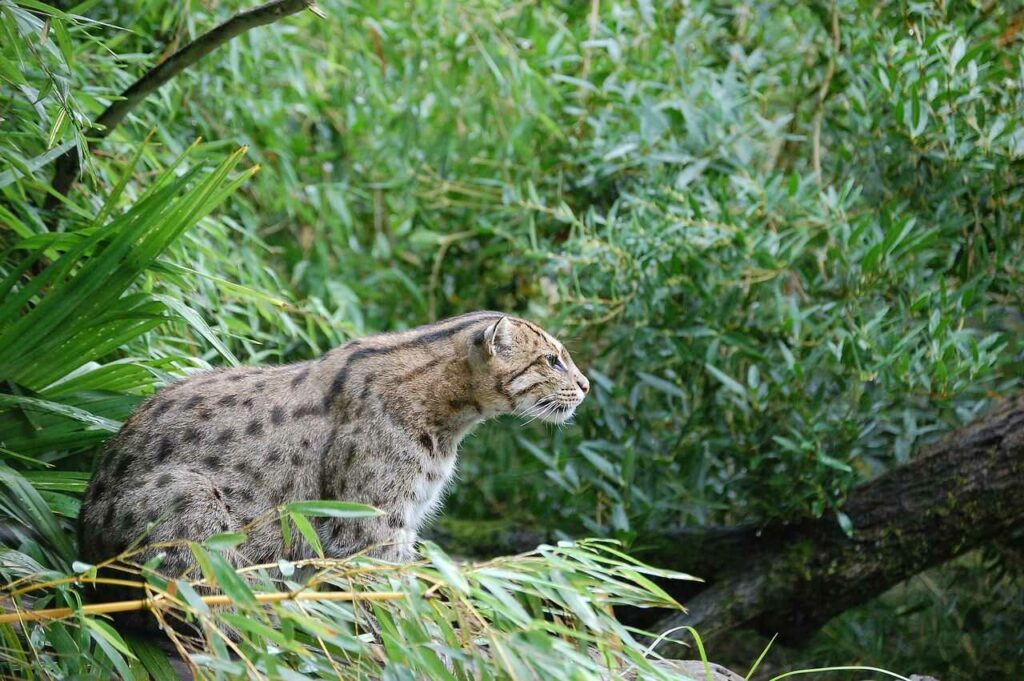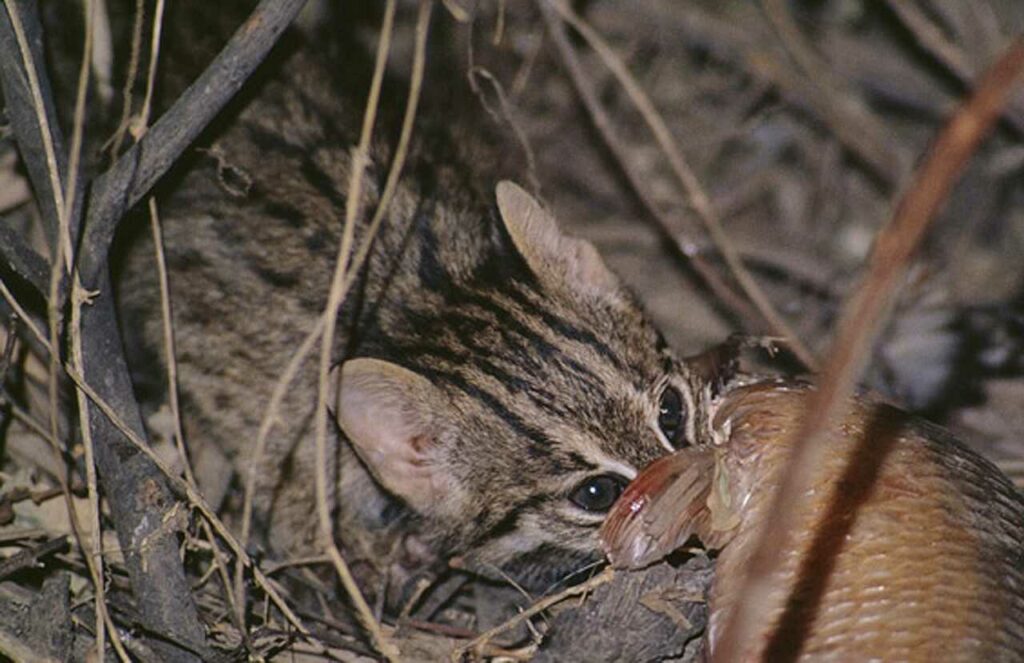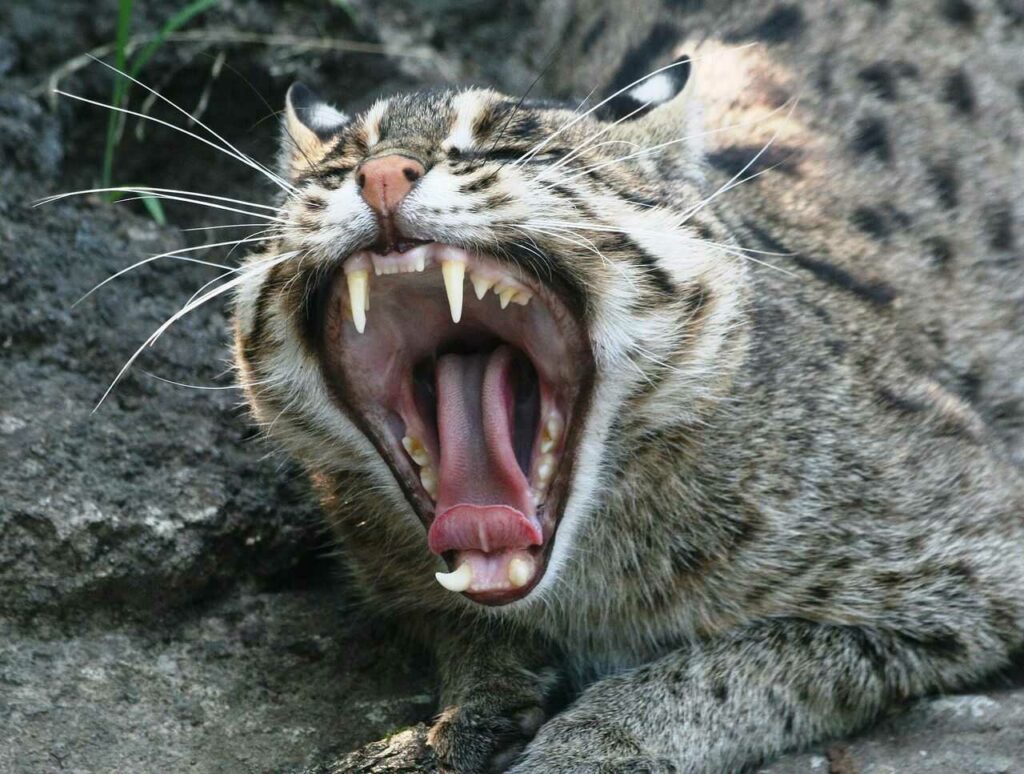
Fishing Cat
Fishing Cat
Fishing Cat
Do you know the fishing cat, a cat family animal that lives near the water and is good at "fishing"? It's the first time I've heard the name, but "Do cat family animals fish?" and "If it's true, it would be interesting!" Many people may have thought so. In this article, let's take a peek at what kind of animal the fishing cat is and what characteristics and secrets it has!
Fishing Cat Basic Infomation

Mammalia-Carnivora-Felidae.
Length 60~80cm. Weight 6~10Kg.
The fishing cat is a wild cat species that lives in South and Southeast Asia. It is slightly larger than a domestic cat, about three times the size. Its fur is grayish-olive in color, with dark brown or black stripes on its face and back, and dark brown or black spots all over its body.
It is a member of the cat family, but it does not dislike water. It does not hesitate to enter the water to catch its prey.
There is little information on the breeding of fishing cats, and especially on their breeding in the wild. It is mostly unknown. It seems that in the wild, they make nests in between rocks, deep bushes, or tree hollows, and give birth to their young there. That is about all that is known.
In captivity, there are records that females reach sexual maturity at about 15 months of age, that the gestation period is about 63 to 70 days, and that they give birth to one to three (average two) kittens per litter.
Fishing Cat Q&A

What is the origin of the name of the fishing cat?
In English, it is called "fishing cat", but in fact, in the case of Japanese, it is named "sunadrineko". This time, why did it come to be called a sunadrineko in Japanese? We will introduce its origin.
Sunadrineko are one species of wild cat that prefers to be near water and feeds on fish.
In Japanese, catching fish is called "sunadoru". Seeing its appearance, it was given the name "sunadorineko".
※Cats are called neko in Japanese.

Why do fishing cats live there?
The fishing cat lives in a wide range of areas from South to Southeast Asia, such as India, Indonesia, and China.
They prefer places where water is abundant, such as mangrove forests, swamps, and riversides in dense forests. This is probably related to the fact that fish, their main food source, are abundant there.

What does a fishing cat eat?
The fishing cat is a carnivorous animal, and unusually for a wild cat species, it mainly eats fish.
Wild fishing cats feed on aquatic animals (fish, crustaceans,etc.), amphibians and reptiles, but they also attack small terrestrial animals (rabbits, mice, etc.) and birds. Sometimes they even attack and eat domestic poultry (chickens, ducks, etc.) or young livestock (goats, calfs, etc.) that humans keep.
The fishing cat's hunting style is mainly to lie in wait at the water's edge and catch its prey.
Besides lying in wait, they also enter shallow water to catch prey, or submerge their whole body and swim after fish. When they catch fish, they take a crouching posture and skillfully scoop up the fish with their forelegs.
By the way, in zoos, they mainly eat chicken, horse meat, and chicks, and get fish (such as mackerel) as a snack.

What kind of personality does the fishing cat have?
Fishing cats look similar to domestic cats, but are actually known for their very fierce personalities.
There is a famous episode that represents that personality.
A British zoologist caught a wild fishing cat and put it in a cage next to a young female leopard that was well accustomed to humans. The fishing cat broke through the wire mesh and invaded the leopard’s cage, eventually killing the leopard.
It may be due to various reasons such as the young leopard not knowing how to fight and being in a narrow cage that the fishing cat won.
We don’t know who would win if a fishing cat and a leopard met and fought in the wild, but this episode conveys that fishing cats have a rough temperament and are strong.
In Bangladesh, one of the habitats of the fishing cat, it is believed that when prey becomes scarce, fishing cats attack and abduct human children.
Therefore, fishing cats are feared like tigers in the local area, but there is no conclusive evidence that fishing cats have attacked humans.
By the way, it seems that fishing cats kept in zoos often observe people and some individuals change their attitude depending on the keeper. When such fishing cats threaten, they make expressions that resemble tigers or lions, like a fierce beast.

Is it true that fishing cats have webbing?
It's true.
First of all, the fishing cat has very large claws, but unlike other cat species, it cannot completely retract them into their sheaths.
Also, despite being a cat species, the fishing cat has webbing between its toes on its front legs, although only partially.
These are thought to be features that help the fishing cat enter the water and catch slippery fish more easily.

What is the difference between a fishing cat and a sand cat?
Now, the fishing cat and sand cat are both wild cats and have similar names, but what are the differences?
These two types of cats have completely different habitats.
Sand cats prefer to live in the desert where water is very scarce, while fishing cats live in tropical waters and love water.Water is essential for fishing cats, but sand cats can survive only on the moisture contained in their prey without drinking water.
The difference in habitat also affects their physical characteristics. The fur of fishing cats is rough and blends into the jungle with a color that is easy to blend in with the surroundings. It is also designed to dry quickly even when wet.
On the other hand, sand cats have fur that blends into the desert with a color that is easy to blend in with the surroundings. Their winter fur grows long and dense, and they have blackish fine hair on the soles of their feet to prevent slipping on desert sand or getting burned.

Can I keep a fishing cat as a pet?
When breeding rare animals at home, it is necessary to follow the established laws in some countries. This time, I will introduce whether it is possible to raise a fishing cat at home in Japan.
Fishing cats are designated as “specified animals” under Japanese law because they have the potential to endanger human life and property. Since June 1, 2020, it has been completely prohibited to keep specified animals as pets in Japan. Therefore, it is not possible to keep fishing cats as pets in Japan.
However, even if you could keep fishing cats as pets, it would be quite difficult to take care of them considering their wild nature.

Is there a place where I can see a fishing cat in Japan?
Fishing cats are being kept at Kobe Animal Kingdom in Hyogo Prefecture, Toba Aquarium in Mie Prefecture, and Higashiyama Zoo and Botanical Gardens in Aichi Prefecture. Until 2017, they were also kept at Tennoji Zoo in Osaka Prefecture.
Since there are few facilities that keep fishing cats, please take your time to observe them when you visit the above-mentioned zoos and aquariums. If you’re lucky, you might be able to see them actually “fishing” for fish.
Fishing cats are animals that are still not well understood and are of concern for their extinction. We hope that there will be opportunities to see them breed and see their babies or discover new ecology.

What is the lifespan of a fishing cat?
The lifespan of the fishing cat is unknown in the wild, but it is thought to be about 12 years in captivity.
A female fishing cat named "Ver" that was kept at the Tennoji Zoo in Osaka Prefecture lived beyond the average lifespan until she was 15 years old, but unfortunately she died of liver cancer.

What kind of enemies does a fishing cat have?
The fishing cat has few natural enemies in the wild, but sometimes it is preyed upon by large reptiles (such as crocodiles and pythons).
The fishing cat is a strong animal that can even kill a leopard, but the biggest enemy for the fishing cat is not crocodiles or pythons, but actually us humans.
Fishing cats are classified as “Vulnerable (VU)” on the International Union for Conservation of Nature (IUCN) Red List and are classified as “Appendix II” under the Washington Convention. This means that although there is no immediate danger of extinction, trade must be regulated to prevent the risk of extinction.
However, in Southeast Asia and other parts of Asia, development is progressing in areas where fishing cats live and where water is abundant. As a result, the places where fishing cats can live are decreasing rapidly.
In the local area, mangrove forests that fishing cats prefer have been transformed into shrimp farms, and fish that fishing cats eat have been overfished and their numbers have decreased significantly.
Furthermore, fishing cats are killed on sight for reasons such as stealing fish caught by fishermen or farmed fish, attacking poultry or livestock, or being killed by pet dogs. As a result, the number of fishing cats is decreasing year by year.
It is worth considering what we can do before fishing cats become extinct.

Would you like to become a part of the 'Animalbook.jp'?
Turn your knowledge into Q&A and share it with the world. ※Publication will be activated after purchase. Let's share information together!
Fishing Cat Type of List

- Fishing Cat
Information
Congratulations! You are the first commenter!

Would you like to leave a comment?
※Please note: This is for the purchase of rights to post comments within the article.

Find Your Favorites!
Our shop offers a unique and attractive selection of goods themed around various animals.
Fishing Cat References

- 今泉 忠明(2004年)『野生ネコの百科』データハウス
- ルーク・ハンター,プリシラ・バレット(2018年)『野生ネコの教科書』エクスナレッジ
- 読売新聞オンライン「スナドリネコ : 飼育員は語る」 https://www.yomiuri.co.jp/local/mie/feature/CO035673/20190128-OYTAT50032/
- 神戸どうぶつ王国「2017 年3月11日(土)王国に新しい仲間たちが!水辺のハンター「スナドリネコ」他 公開決定」 https://kyodonewsprwire.jp/prwfile/release/M102567/201703200056/_prw_PR1fl_YLgyH8pj.pdf
- 鳥羽水族館「Gコーナー 奇跡の森」 https://www.aquarium.co.jp/kannai/mori.html
- 公益財団法人トヨタ財団「バングラデシュ北東部の湿地におけるスナドリネコと人との軋轢緩和に関する研究-軋轢の基礎調査と軋轢緩和における住民参加型調査の可能性-」 https://www.toyotafound.or.jp/research/2016/data/D16-R-0176_SuzukiAi_finalreport.pdf
Fishing Cat Introduction of media used
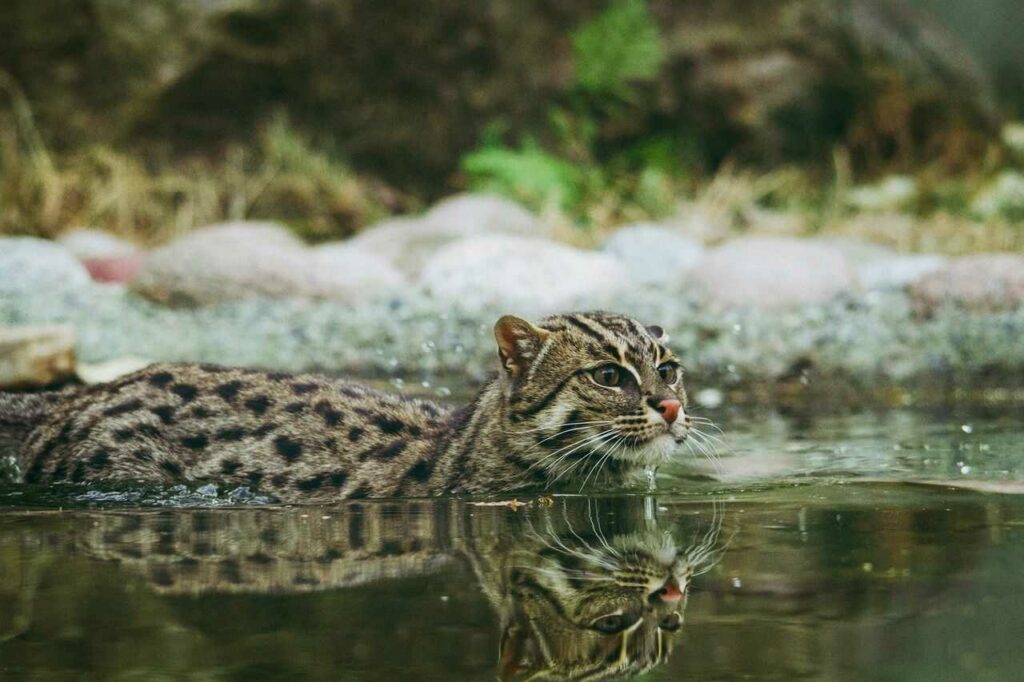
出典:https://unsplash.com/photos/8LJrO7D-GgE

出典:https://pixabay.com/images/id-2374799/
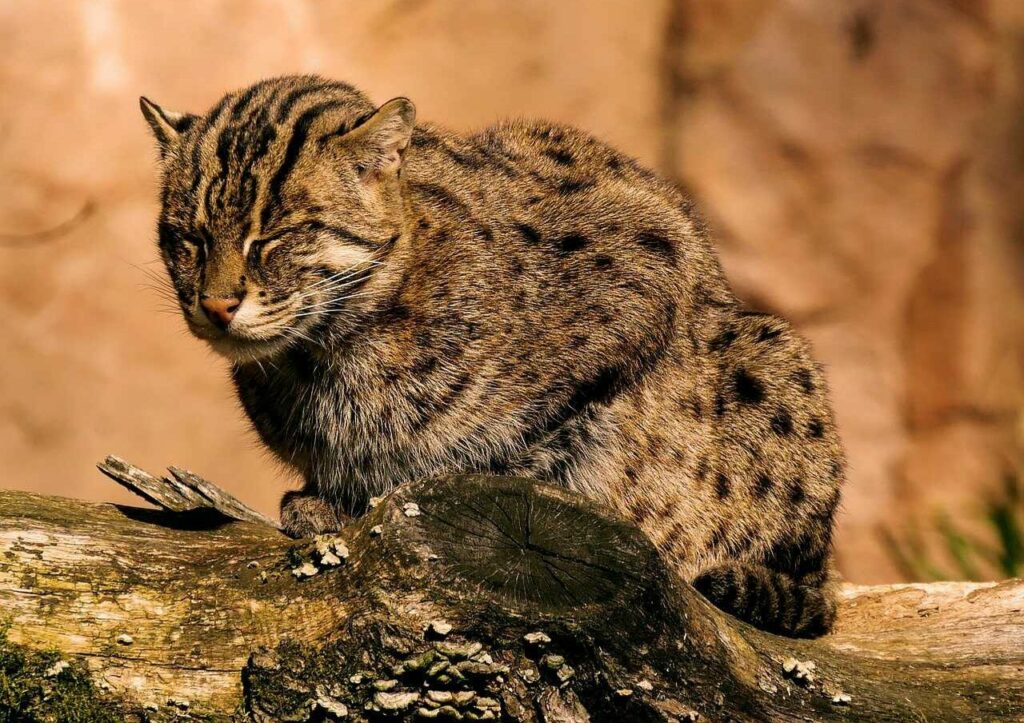
出典:https://pixabay.com/images/id-4071402/
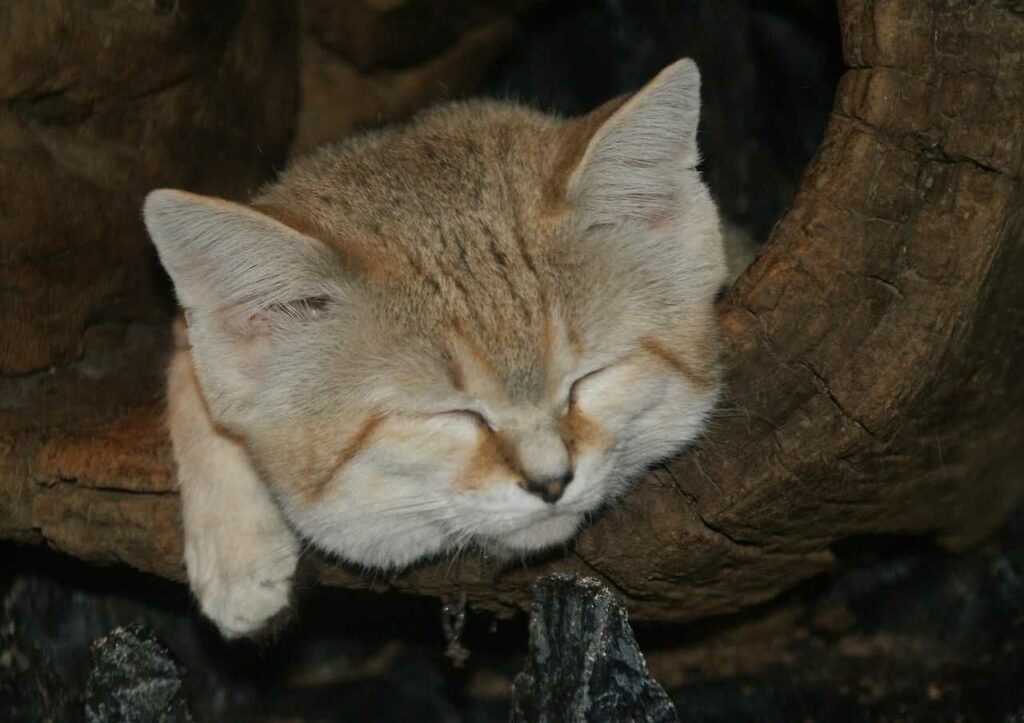
similar
出典:https://commons.wikimedia.org/wiki/File:Felis_margarita_13.jpg
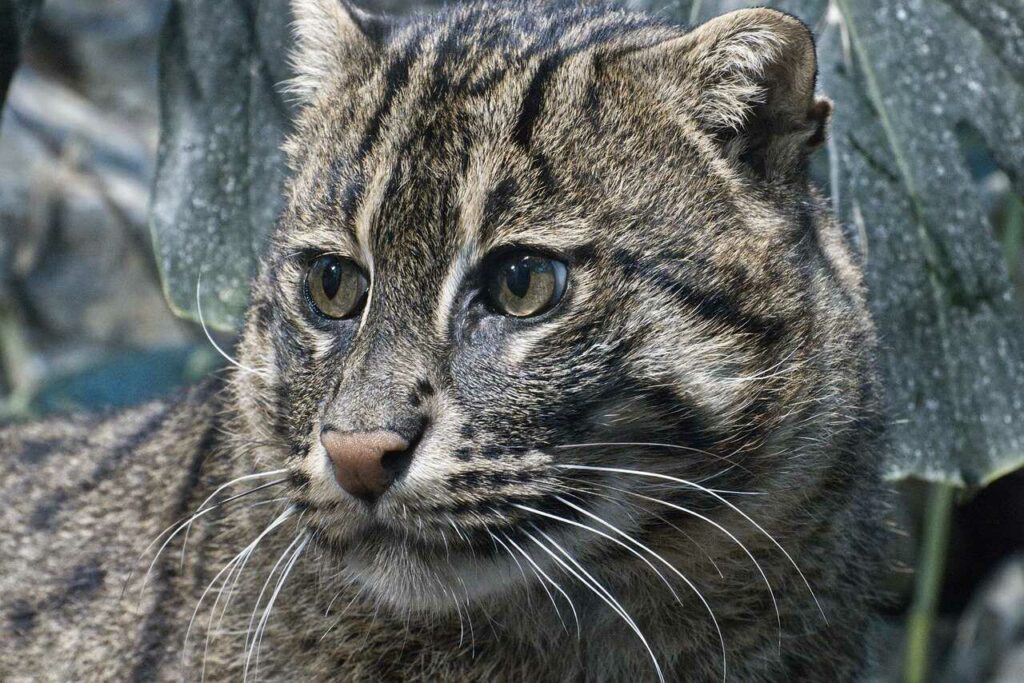
出典:https://pixabay.com/images/id-3980208/

出典:https://pixabay.com/images/id-920242/
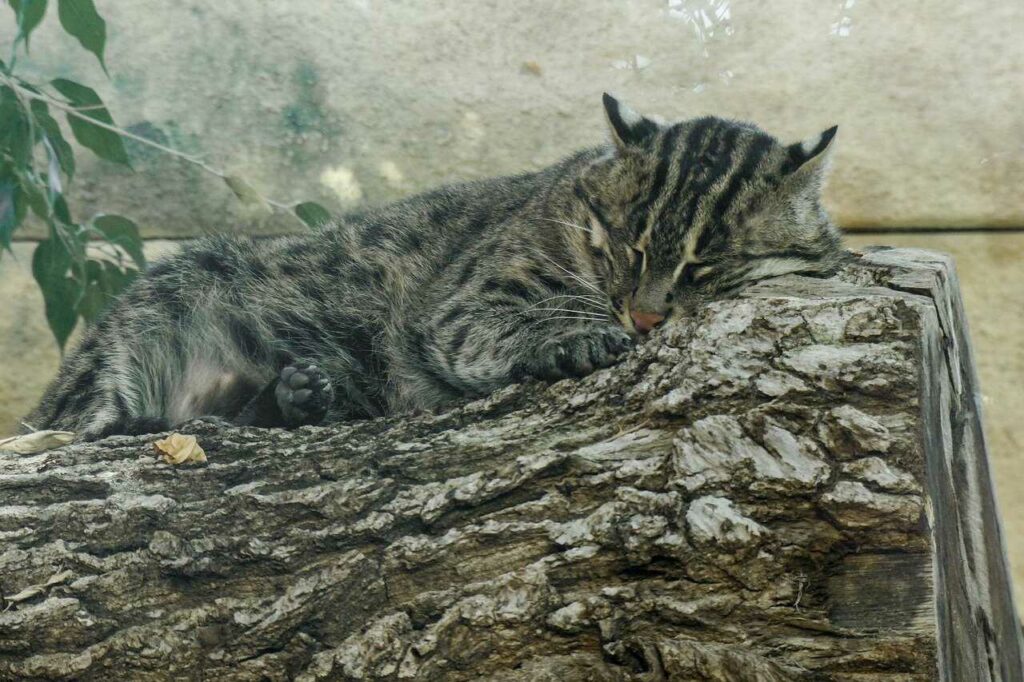
出典:https://pixabay.com/images/id-567303/
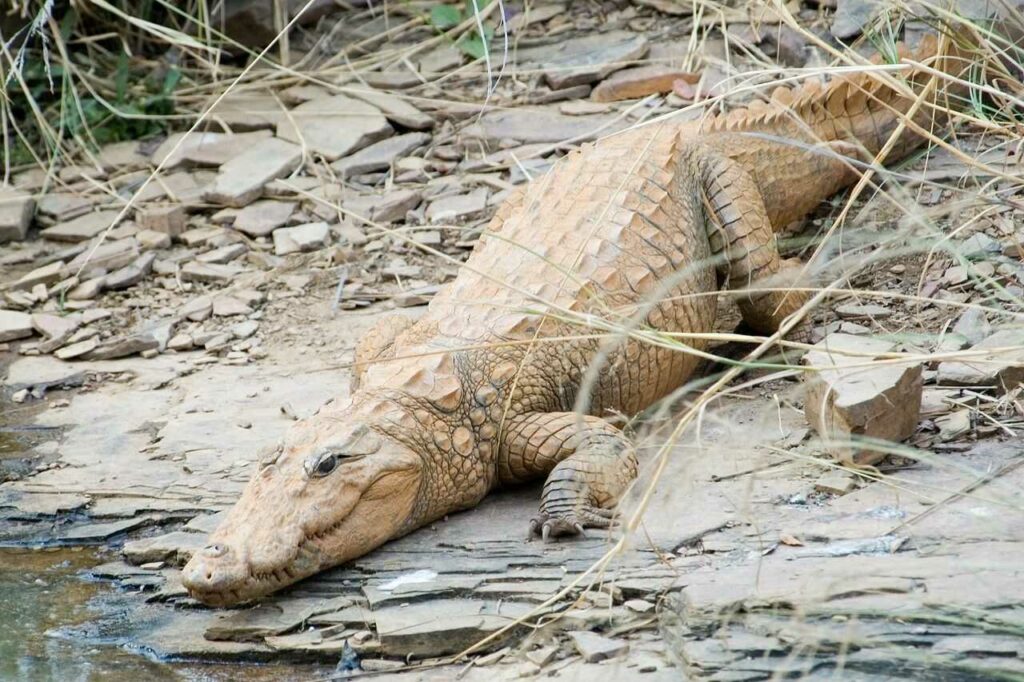
enemy
出典:https://commons.wikimedia.org/wiki/File:Mugger_crocodile_Crocodylus_palustris_(2155269175).jpg
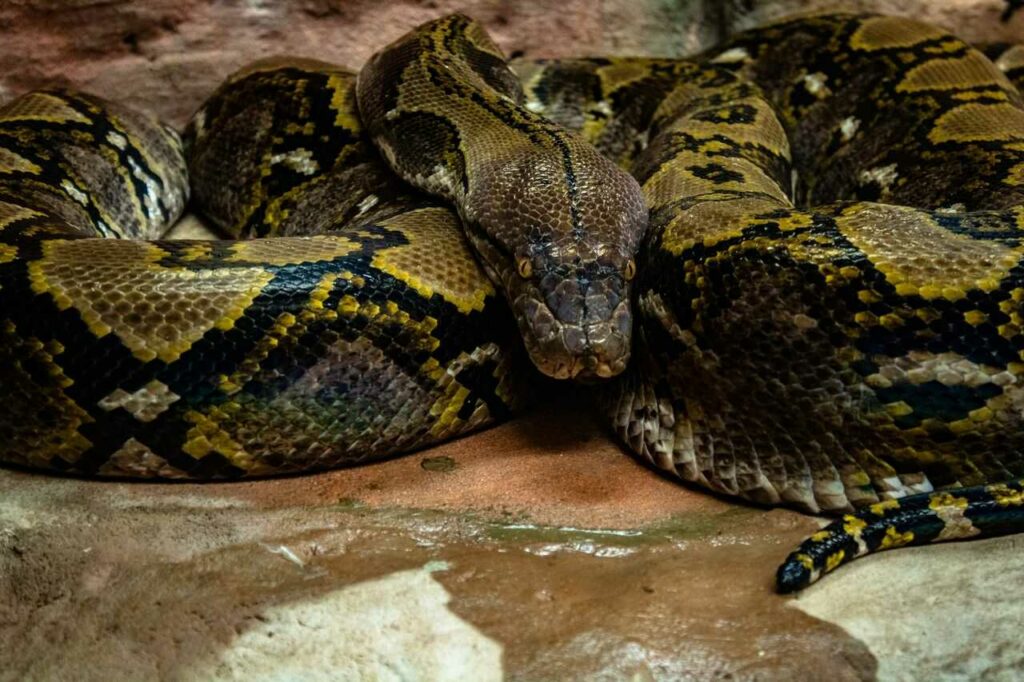
enemy
出典:https://unsplash.com/photos/9X5mfoq8yOo
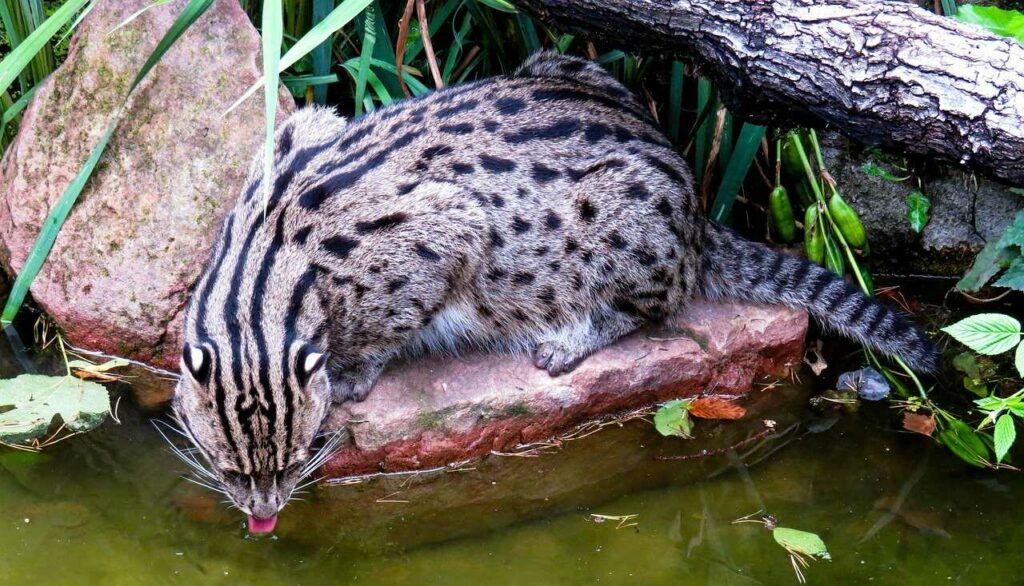
出典:https://pixabay.com/images/id-920254/

Help Enrich Our Animalbook.jp with Your Media!
We are constantly looking to expand and enrich our Animalbook.jp with amazing photos and videos of animals. If you have any media that you'd like to share, please contribute and help us showcase the beauty and diversity of the animal kingdom. Your submissions will be credited and featured in our encyclopedia, reaching a wide audience of animal lovers.









